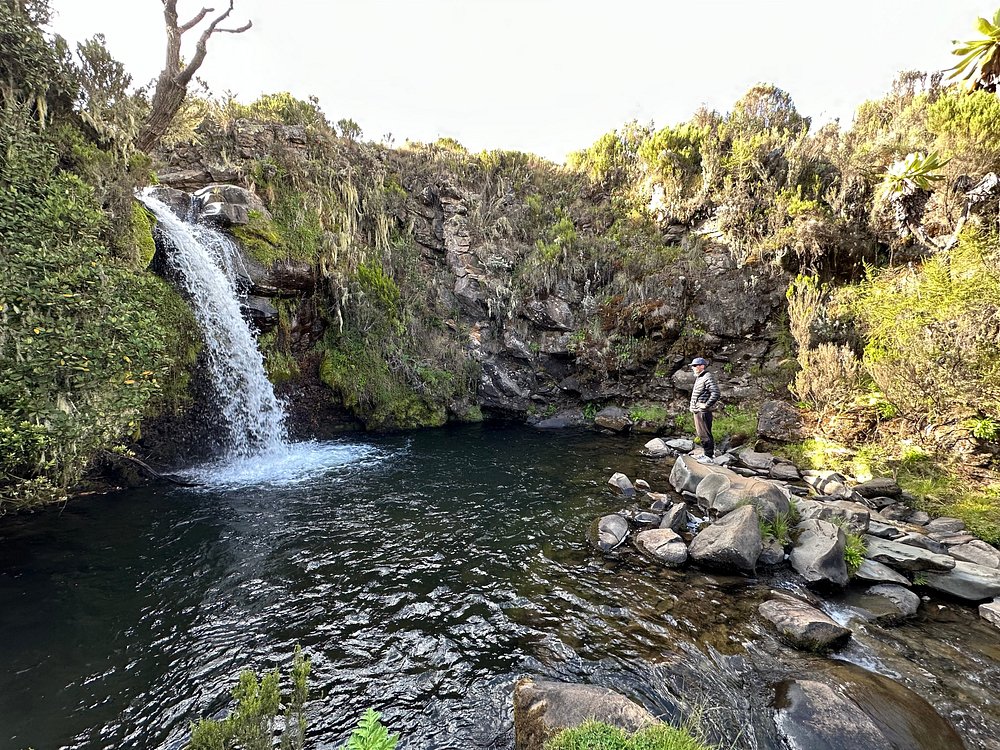Mount Kenya National Park – Climbing, Wildlife & High-Altitude Safari Adventures
Welcome to Mount Kenya National Park, a UNESCO World Heritage Site and Kenya’s second-highest safari destination. Towering at 5,199 meters (17,057 ft), Mount Kenya offers a unique mix of alpine trekking, wildlife viewing, and cultural heritage — all within just a few hours from Nairobi.
Whether you’re dreaming of a Mount Kenya climbing safari or a relaxing nature experience among forests and waterfalls, this park delivers both adventure and tranquility.
Why Visit Mount Kenya National Park?
Mount Kenya offers a peaceful alternative to busier parks like Masai Mara — yet with equally stunning wildlife and landscapes.
Top Reasons to Visit:
Mount Kenya Wildlife & Landscapes
Though primarily known for trekking, Mount Kenya National Park is also rich in wildlife.
Expect to see:
Elephants
Leopards
Buffalo
Black-and-white colobus monkeys
Over 130 bird species including sunbirds, turacos, and eagles
Giant forest hog, hyenas, bushbucks
It’s a perfect Kenya wildlife and mountain park combo destination.

Mount Kenya Hiking & Climbing Tours
Trekking Mount Kenya is one of East Africa’s most rewarding experiences. Several established routes offer scenic and safe access to the mountain’s peaks:
Popular Climbing Routes:
Sirimon Route – Most popular, moderate challenge
Chogoria Route – Most scenic with waterfalls and lakes
Naro Moru Route – Shortest but steep and physically demanding
We offer:
3–5 day Mount Kenya climbing safaris
Fully guided treks with porters, tents/lodges & permits
Optional acclimatization treks for beginners
Ask about our combo safari packages that include Ol Pejeta, Samburu, or Meru after your climb.

Best Time to Climb Mount Kenya
| Season | Months | Conditions |
|---|---|---|
| Dry Season | Jan–Mar, Jul–Oct | Clear skies, dry trails (best for trekking) |
| Rainy Season | Apr–Jun, Nov | Slippery trails, beautiful green landscapes |
Mount Kenya Safari Packages
Mount Kenya & Samburu 6-Day Safari
Trek Mt Kenya then visit Samburu for elephants, leopards & unique wildlife.
3-Day Mount Kenya Trekking Tour
For hikers short on time — includes Sirimon route, guide, and overnight stays.
Climb, then relax with rhino tracking & luxury lodges at Ol Pejeta Conservancy.
How to Get to Mount Kenya National Park
Discover the Heart of African Wildlife

Ready to Explore Mount Kenya?
Speak to Our Safari Experts Now
Get a Free Climbing or Safari Quote →
Chat with a Planner on WhatsApp
📥 Download Trekking & Safari Itinerary PDF
Mount Kenya Safari FAQs
January to March and July to October — dry conditions and better trail access.
The highest peak, Batian, reaches 5,199 meters (17,057 ft). Most trekkers hike to Point Lenana at 4,985 meters (16,355 ft).
No. Many trails are suitable for beginners, and we provide guides and acclimatization options.
Absolutely! Combine it with Samburu, Meru, Aberdares, or Ol Pejeta for a custom Kenya safari itinerary.
Yes. It’s a well-patrolled and professionally managed park. We work with certified guides for all treks.

